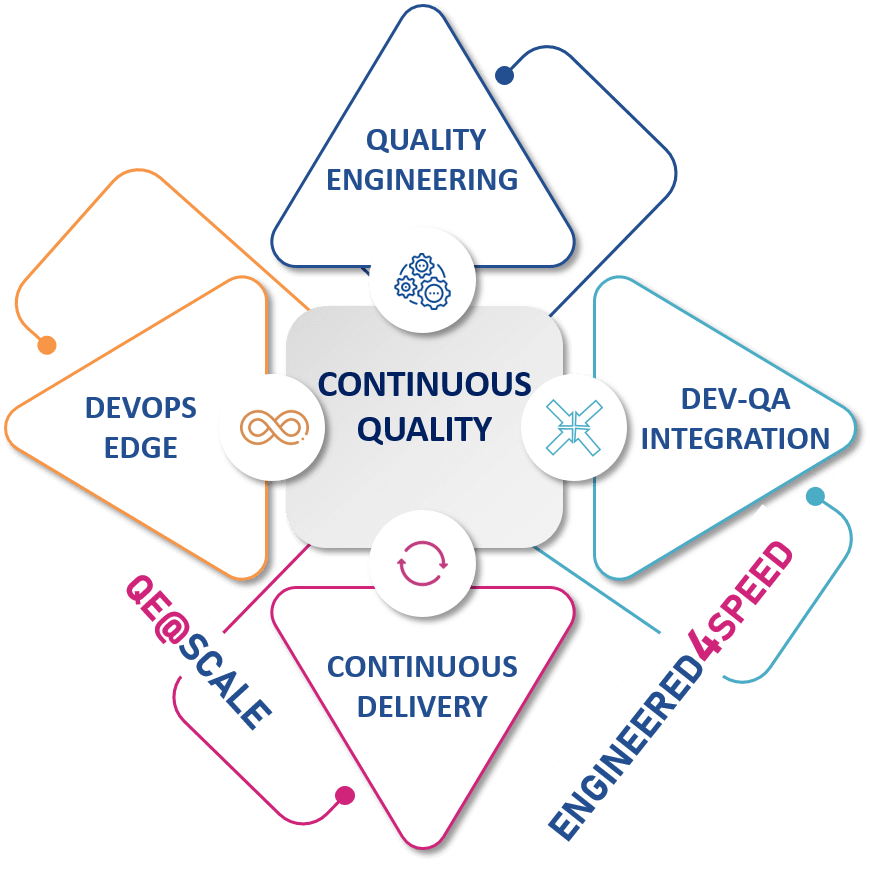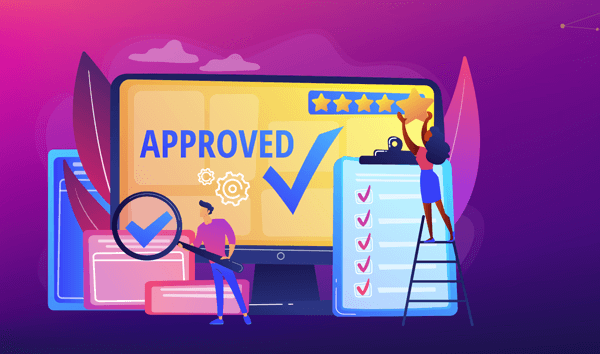The blog article elaborates on the DevOps edge and how its outcome oriented approach enables Continuous Quality Engineering to meet the growing demand for quality software applications in shorter time
DevOps is an umbrella term for a combination of cultural philosophies, practices and tools that increases an organization’s ability to deliver applications and services at high velocity. It manages to provide continuous delivery with high software quality, something it does by evolving and improving products, faster than the traditional software development and infrastructure management processes.
DevOps at its core delivers quantum results because of the frictionless collaboration between Developers and operations teams.
DevOps breaks down silos that arise out of hierarchical organizational models. In a typical IT team, the certified professionals would range from Linux/Unix, Windows, Networking, Storage, Security and Databases. In a DevOps set up, the barriers between such teams, Operations, and Testing teams does not arise, as the linear and discrete method of passing over tasks is eliminated. One happy outcome of this closer IT- Business collaboration is the shared empathy for the end customer. Additionally, the shorter feedback loops mean higher efficiencies, thereby freeing up resources and time for other innovations.
As the rate of change of business accelerates, companies are less able to predict the directions of change. In this unnerving climate, DevOps brings an agility that responds to the industry-market changes on the fly. In fact, the legendary DevOps velocity specifically emphasises reduced ‘time-to-market’. Be it APM, build automation, configuration management, release automation, or service virtualization among other DevOps tools – all are focussed in bringing new revenue generating services online faster.
In times where software industry lives by the adage: ‘release fast or die’, it is DevOps that accelerates the speed of software delivery by an end-to-end automation.
It is a prudent thought to consider: In response to the DevOps edge, how is Quality Engineering as an industry discipline recasting itself?
Let’s answer that with some context first.
As Digital revolution continues to push organizations to reinvent their business models, it also causes the rise of distributed technology, adding in layers of complexity. Businesses today understand that for unmatched customer experience ‘superior quality at speed’ is key.
Hence it is imperative for leaders in Quality Engineering to bring a double edge to their Digital-age QE competency: Cutting edge Dev-Test-Ops approach and real time insight driven dashboards, that uniquely anticipates typical pitfalls and proactively manages the choke points through various contextual solutions. In this regard, the DevOps edge helps tremendously. For strategically inclined organizations, it makes possible by adopting continuous quality techniques, a culture of “95% or more QE automation”.

Knowing fully well, that Quality Engineering’s primary focus is continuous quality, how do organizations across industries bring this to reality?
We have spoken about DevOps contribution earlier and will now expand on the specific “how’s”
- Enabling Agile/DevOps adoption through continuous testing(the ‘Big Tech’ way)
- Facilitate Agile/DevOps based approaches, so as to offer early engineering proficiency to detect pitfalls/defects
- Plug in tools and accelerators across the CI/CD pipeline in a DevOps scenario
- Enable Dev-QA integration through right set of development tester talents (SDET’s based propositions).
- Institute production and test failure feedback mechanisms into cycle at every stage in order to know the code quality and functionalities meet business requirements.
Next, the ability to consciously contextualize the customer’s need in relation to the market speeds, is as critical as the customer and product journeys that is based on test design and execution accelerators.
No matter the execution approach, the end goal remains: Zero Defects. These are achieved by:
- Reinforcing forces of early engineering across the entire phase of customer and product journeys
- Maintaining code quality by reducing defects/ leakages using proven tools, accelerators and frameworks across the phases of code design, development, solution prototyping and launch
A best-in-breed QE organization prides in its ability to deliver ‘QE at Scale’.
This is made possible by integrating QE platform with real time insight driven dashboards for effective decision making. The augmentation of this platform is through DevOps enablement.
What does a QE-at-scale philosophy entail?
Along with customers receiving complete engagement transparency, the QE at scale principle, assists in resolving pitfalls earlier in the development cycle. Additionally, the continuous quality rigor necessitates repeated in-sprint testing across the whole yards of functionality, digital, security, performance, compatibility and usability. Finally, the QE for continuous delivery model relies heavily on the organizational ability to work through ready-to-deploy API/micro service models, framework, and reusable test libraries etc.
In sum, today Quality Engineering engine delivers if it is successfully integrated on the twin premise of – engineered for speed and powering QE at scale.
And how does continuous delivery happen through this integration?
The answer is that customer journeys are orchestrated by conscious contextualization enabled through the organization’s comprehensive competencies. The journey is then steered with cognitive computing methods (AI, ML, NLP, RPA etc.), in the shape of tools, accelerators and frameworks.































